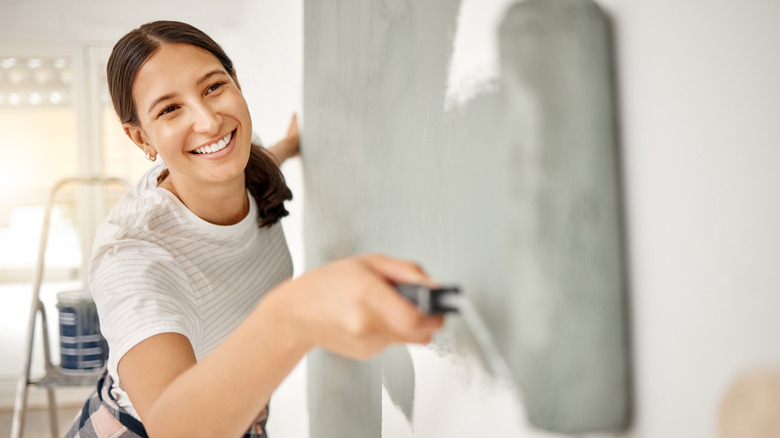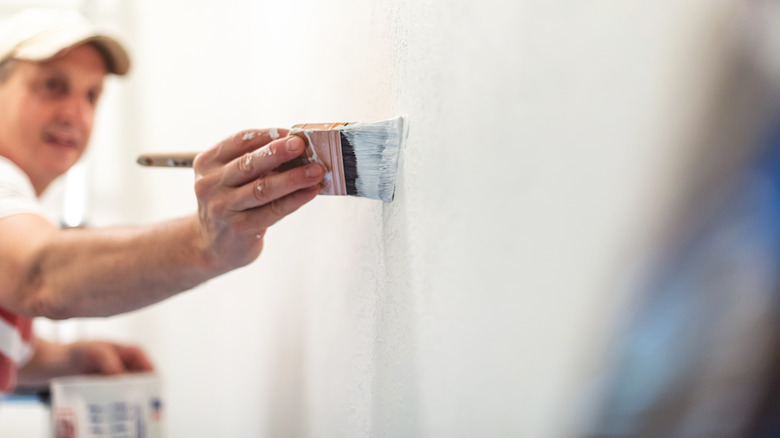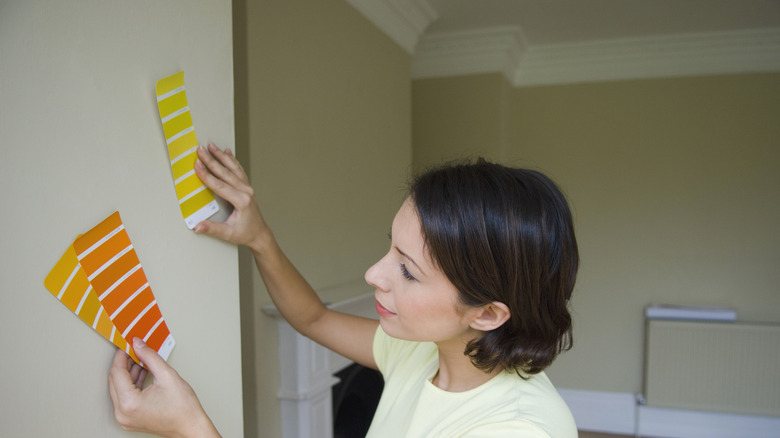How To Use A Light Bulb To Ensure Your Paint Project Is Flawless
Achieving a perfect paint job is a challenge, especially when it comes to textured walls and wood grain, which can show imperfections that may be enhanced by some colors and shades more than others. This means, of course, that what seemed like a perfectly flawless finish when in-process has glaring flaws once the paint and brushes are already put away. There is, however, a full-proof method, using an everyday household item, that will go a long way toward helping you achieve perfect results — a lightbulb! By using a handheld lightbulb to examine your surface, both before and after, you can spot any dips, cracks, or grain problems much more efficiently, allowing you to fix them before it's too late.
Using a lightbulb can help identify other issues including loose paint, ragged edges, and cracks in surfaces that may hide at first glance. Moreover, a lightbulb may also help you determine what the paint job will look like in the space by showing what effect artificial lighting has on the finished paint job.
The perfect finish
Using a lightbulb has long been a trick for automotive painters to spot problem areas in paint jobs that depend very much on a flawless finish. The same process and principle can be used on any surface that you are painting, since a close, exacting light will cast shadows where anything is amiss and may need filling or addressing. It's particularly handy between each coat of primer or paint to make sure you spot issues early on.
Using the lightbulb before laying down your primer is ideal. This step will allow you to circle any blemishes or problem areas with a pencil. For dips and cracks in wood or drywall that are shallower, fill in with spackle or sand them as needed. For deeper cracks or indents, use a 2 part epoxy filler specifically designed for the surface you are working on. Also, be sure to carefully remove dust or debris after additional sanding as they can cause further imperfections on the painted surface.
Light and color
Using a lightbulb can also be useful in determining what your paint job will look like under artificial light. The all-important Color Rendering Index (or CRI) impacts how we experience any given color. Light sources usually range from 70 to 100 CRI, 100 being the optimum that is offered by full natural light, with everything else falling lower than that on the scale. A lower CRI can make any paint color look far more drab or grayish than full natural light.
Many LED lights sold by retailers have a CRI of 80, but increasing that to 90 with slightly more expensive bulbs can have a huge impact on making your paint color more consistent during all times of the day. By testing out bulb differences during the painting process, you can not only see the benefits of higher CRI bulbs but also evaluate whether or not the color is exactly what you want. This is particularly useful if your space has limited natural light like a basement or hallway.


